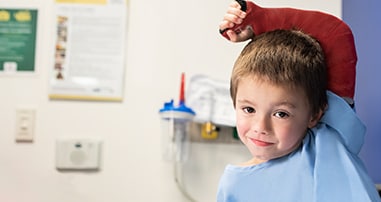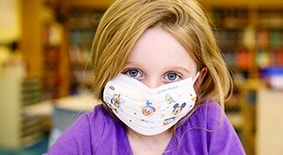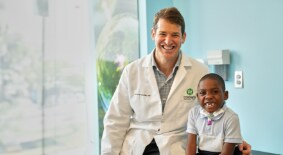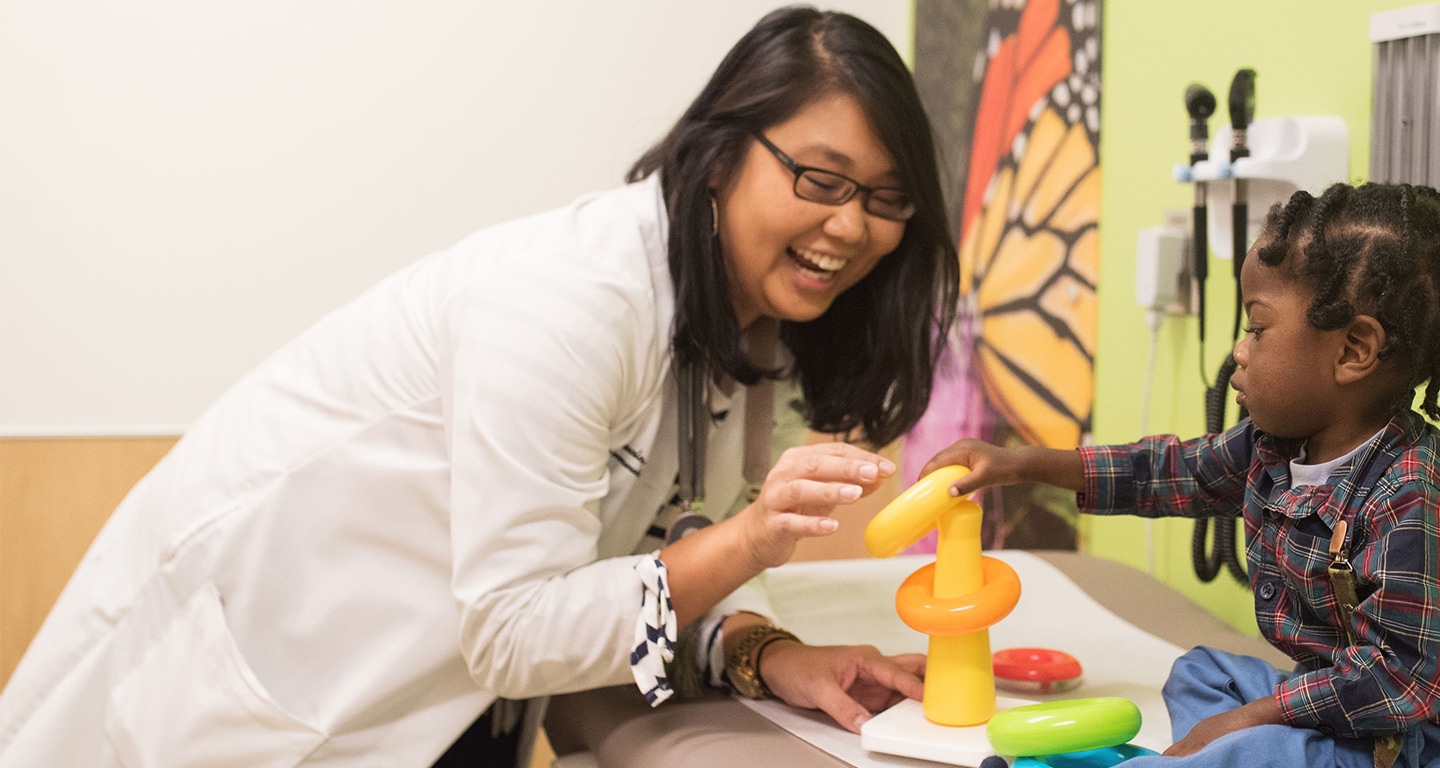
Quality Care
Children’s Healthcare of Atlanta has a proven track record of providing world-class care to young patients in more than 60 pediatric specialties. We are committed to keeping patients safe, providing the same standard of care in every facility, and making sure there is effective communication among patients, parents and caregivers.
When it comes to medical care, children are not just little adults. They should be treated in a children’s hospital where they can get specialized care from pediatric doctors, nurses and specialists who understand their unique needs.
Our goal is to provide a safe and healing place for all patients and their families, making sure every patient receives the highest level of quality care. To constantly improve patient safety, Children’s uses programs that help us prevent problems, protect children and partner with families. This allows parents and guardians the freedom to give their children the love, support and reassurance only they can provide.
- Fall prevention: Some of our patients are more at risk for fall-related injuries. We teach these children and their families how to prevent falls.
- Safe radiology: Our team uses some of the lowest possible radiation doses in the country. We even reduced radiation exposure by as much as 50 percent for some scans.
- Safe surgery checklist: Before every surgery we use a checklist that has been proven to lessen surgical complications.
- Speak up: We encourage patients, families and staff to tell us about every single concern so that we can fix it quickly.
- Surgical site infection (SSI): Infections after surgery are a serious concern. To prevent them, we use special skin disinfectants and give infection-fighting antibiotics for surgeries when needed.
- TLC on I.V.: I.V. safety is very important. Before giving a dose of intravenous medicine, the nurse performs TLC: touch the I.V. display, look at the dosage and call the I.V. information out loud to another nurse. This is how we make sure that your child gets the right amount of the right medicine.
- Medication safety: No interruptions are allowed when medications are being given. Distractions cause errors. Our doctors and nurses confirm the “five rights” before giving medicine to all patients: right patient, right time/frequency, right dose, right route and right drug.
- Patient identification: We always confirm every child’s identity before we give medicine, draw blood, begin feeding or start other procedures.
- Vital sign monitoring: Your child’s doctors and nurses will keep a close eye on his vital signs, such as his respiratory, neurological and cardiovascular status.
- Pressure ulcer oversight team: Children’s has specially trained nurses to help your child avoid developing hospital-acquired pressure ulcers.
- Breast milk identification: Each infant should get only his or her own mother’s breast milk, so we label each bottle and check it against the IDs of both mother and child.
- Rapid response: Teams of highly skilled nurses and respiratory therapists are immediately available to respond to patients who need urgent care anywhere in the hospital.
- Transfer of care: Any time your child’s care is transferred to a new location or group of caregivers, we work to make the transition as safe as possible.
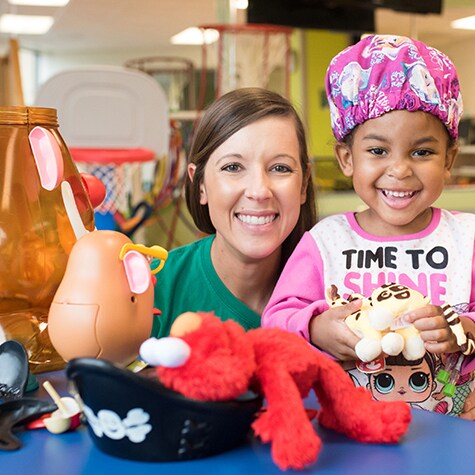
Leading the Nation in Pediatric Care
Children’s is nationally recognized for raising the bar in pediatric healthcare through our focus on family-centered care, emerging research and innovation, and building to the future.
SEE MORE
Children who get an infection while in the hospital are more likely to stay sick longer and spend more days in the hospital. We take extra steps to prevent infections from spreading to anyone at Children’s, healthy or sick.
Our team of highly trained, nationally certified infection prevention specialists works with our staff to help make visits to Children’s as safe as possible. Our infection prevention rates show how we rank among the best healthcare providers in the nation.
Children’s has received several infection prevention awards due to our successful programs, including:
- Dress to Protect Program: Coughing, sneezing and contaminated clothing can give your child an infection. The Dress to Protect Program gives protective clothing, like masks, gloves and gowns, to everyone to wear in areas where infection is present. This keeps germs from spreading outside isolation areas.
- Immunization Program: The entire Children’s staff is current on immunizations. Your child can also get routine immunizations during his visit. Ask your child’s doctor or nurse for more information.
- Speak Up Program: We encourage doctors, nurses, staff, patients and families to tell us about any and all concerns.
For more information, contact Kim Murphy.
- Terry Brown, MS, CCC-SLP, HACP, Manager, System Regulatory Services
- Linda Cole, RN, MBA, FACHE, NEA-BC, Chief Nursing and Hospital Operations Officer
- Lisa Davis, RPh, Medication Safety Consultant
- Jim Fortenberry, MD, FAAP, MCCM, Chief Medical Officer
- Gary Frank, MD, MS, Chief Quality Officer
- Reena Gupta, RN, MSN, MPH, PMP, CSSBB, CPHQ, Manager Process Improvement
- Jeff Rehberg, Director, Clinical PI and Patient Safety
- Natalie Tillman, RN, BSN, Manager, Clinical Effectiveness and Patient Safety
- J. Renee Watson, MSN, RNC, BSN, CPHQ, CIC, CPS, Senior Director, Quality and Patient Safety
There are several things to consider when choosing a hospital for your child, including how many patients the care team treats and how well the team treats those patients. Below you can read more about how and why we measure our performance. You will also find links to graphs of our results compared to national standards. Our results span the entire Children’s System, which includes three hospitals, Marcus Autism Center and the Center for Advanced Pediatrics.
- Number of patients (volume): A hospital’s volume is the number of patients it treats. Hospitals with higher volumes are able to do more procedures and gain more experience treating injuries and diseases. This makes a hospital better able to care for its patients.
- Results (outcomes): Outcomes are the results of our clinical efforts. They reveal how effective we are at doing our jobs.
- Sharing information (transparency): Children’s believes in being open and honest, which is why we make our volumes and outcomes easy to find and visible to everyone.
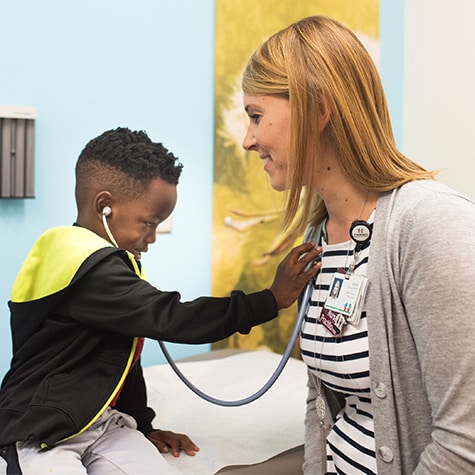
Our impact on Georgia
We know Georgians are counting on us to make a difference, both in the lives of kids and in the strength of our communities. We serve children from all 159 counties in Georgia.
Download Report
